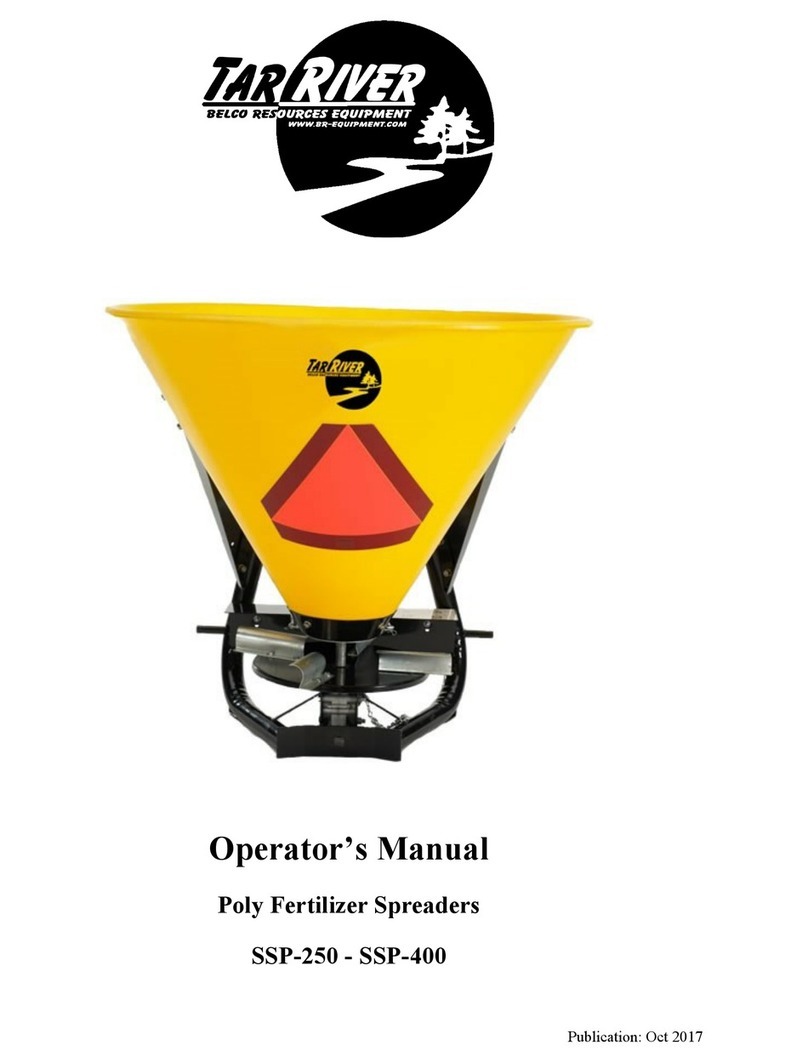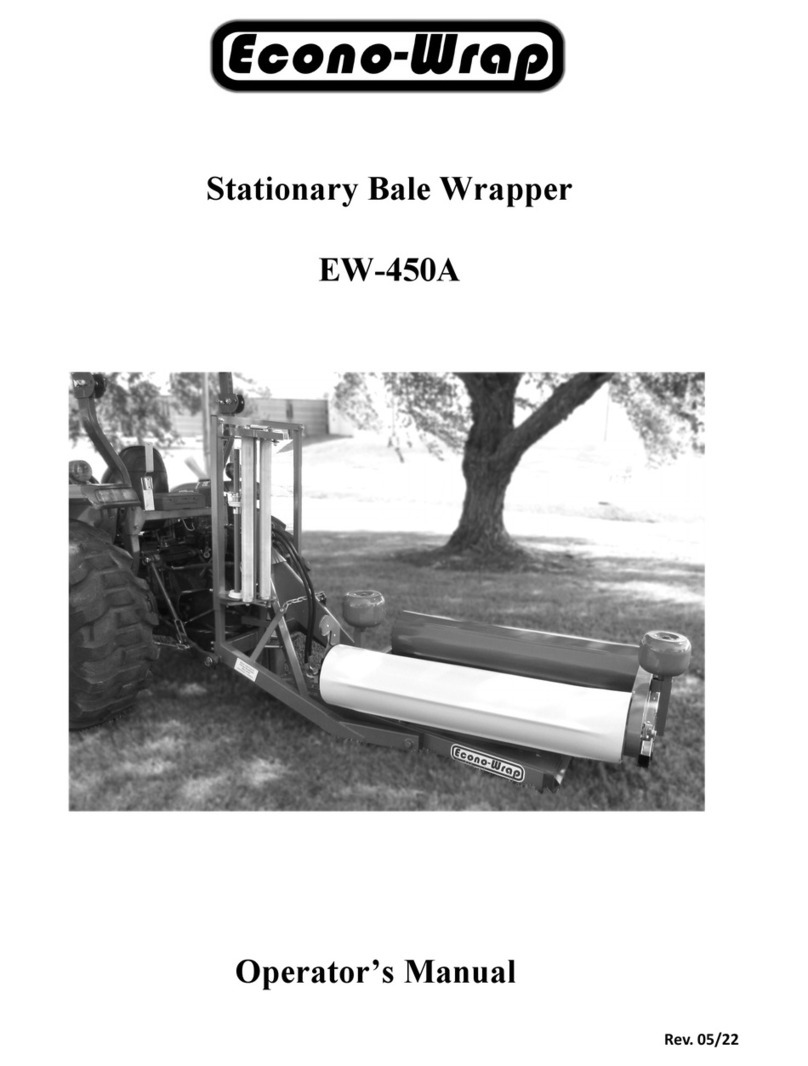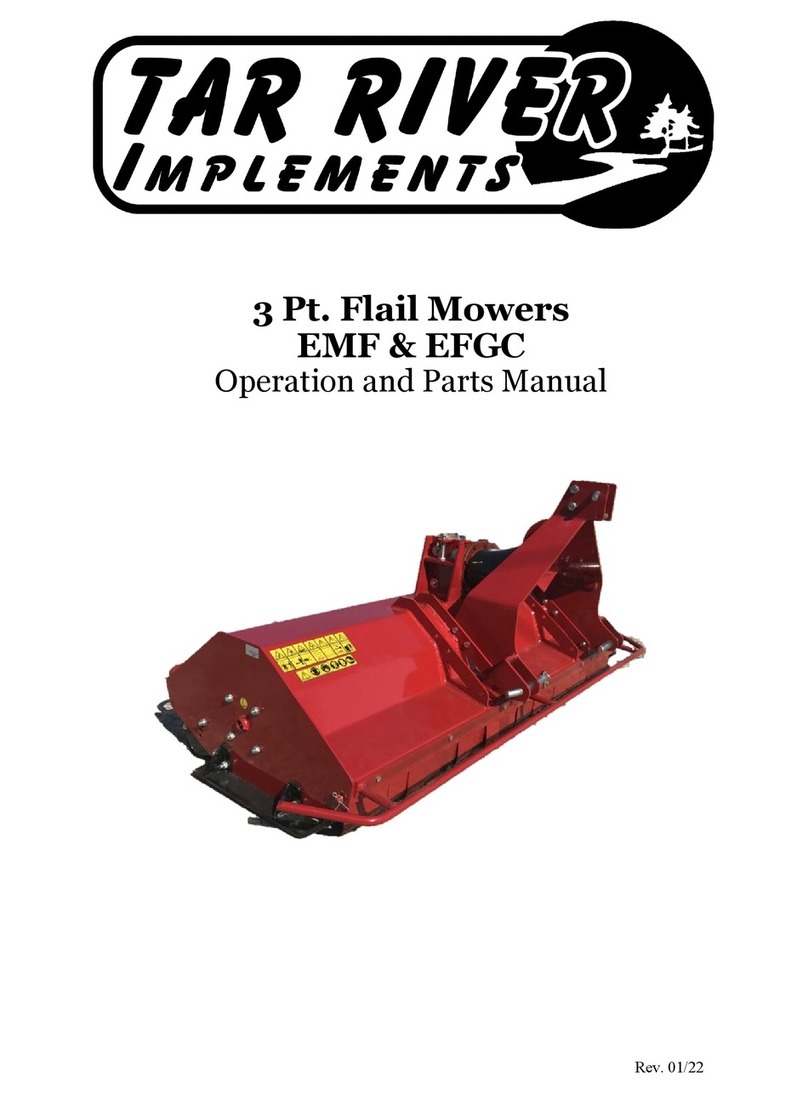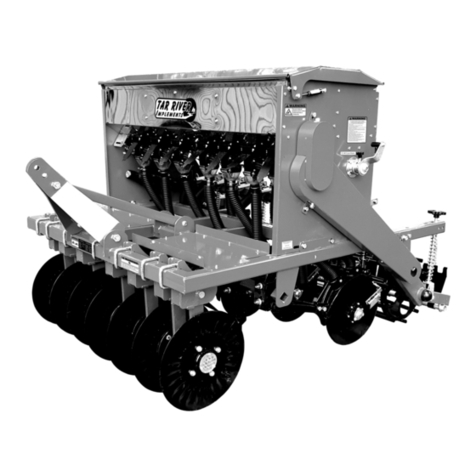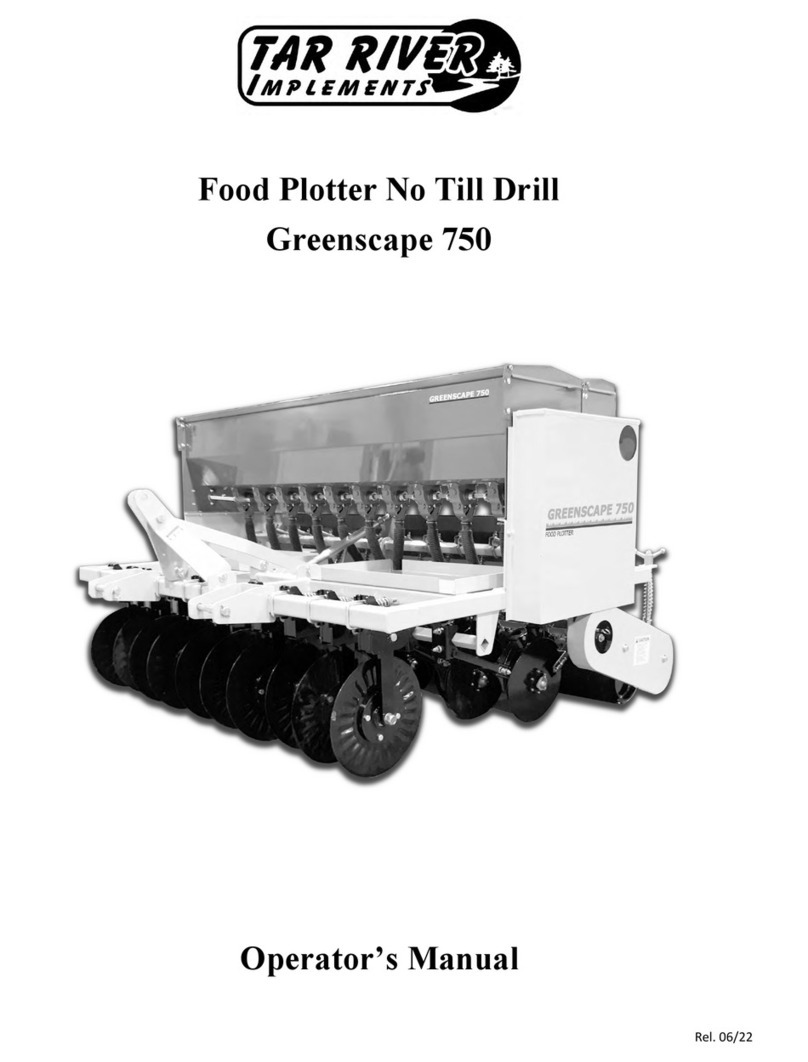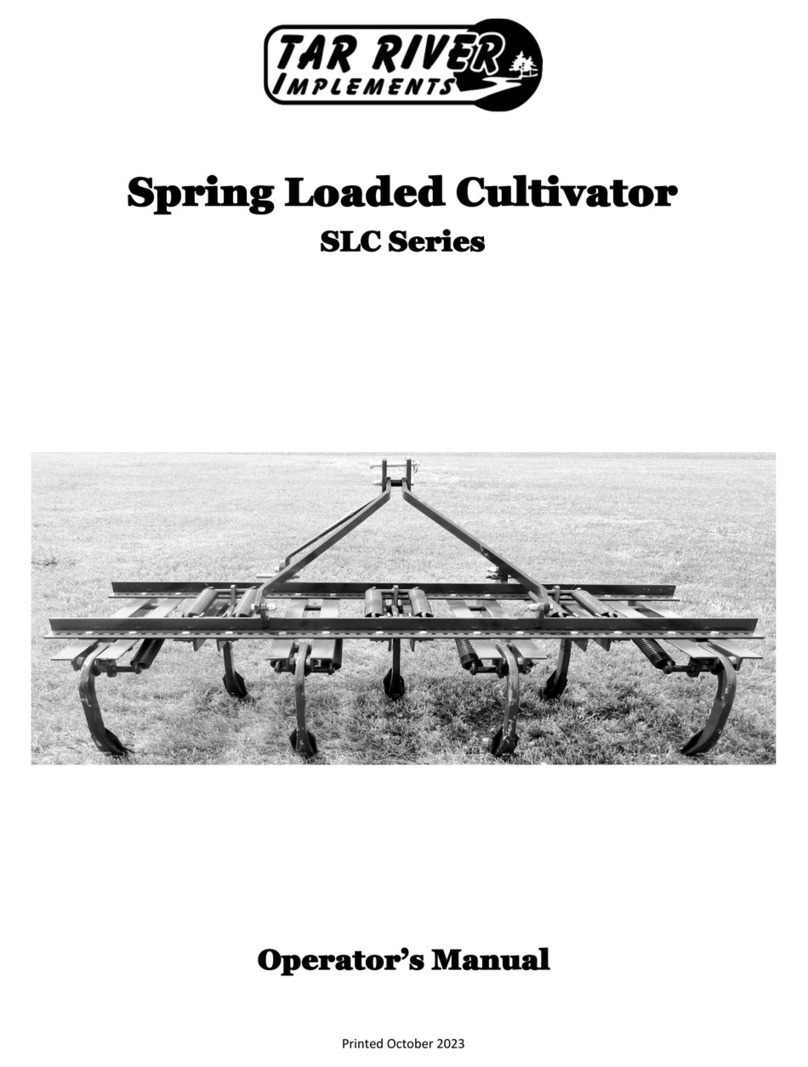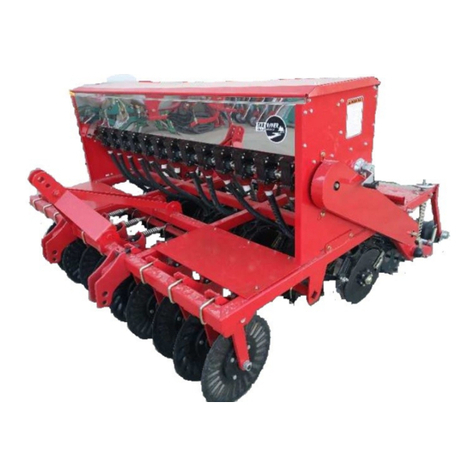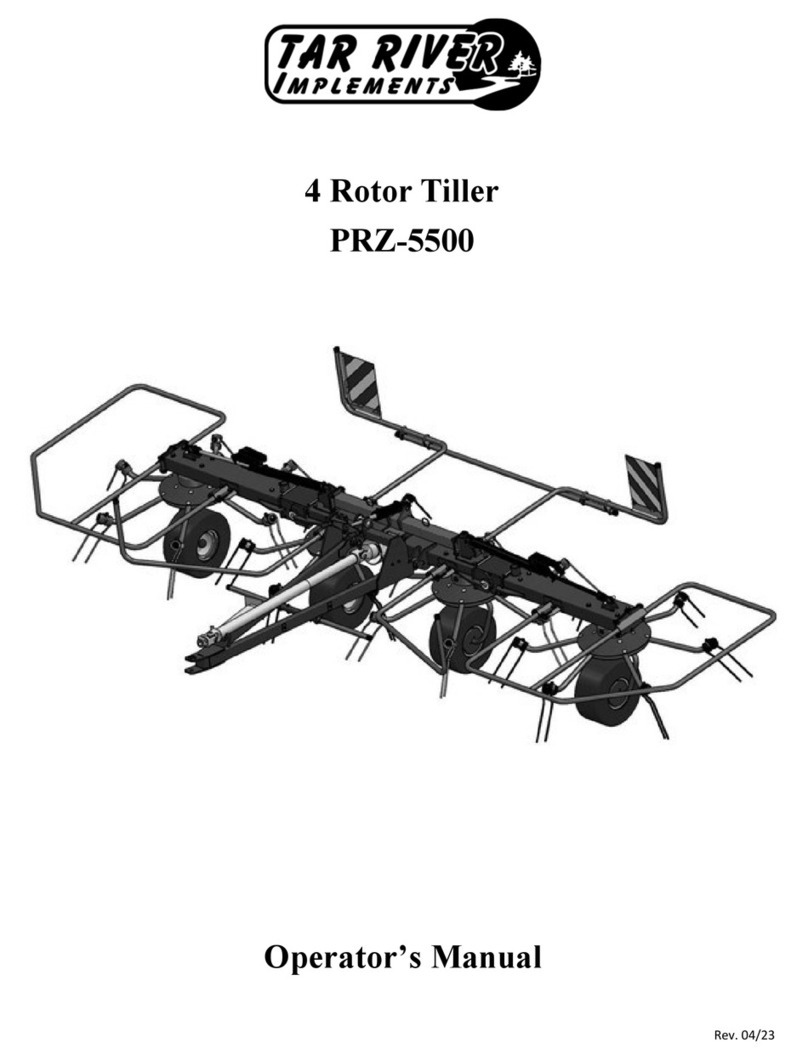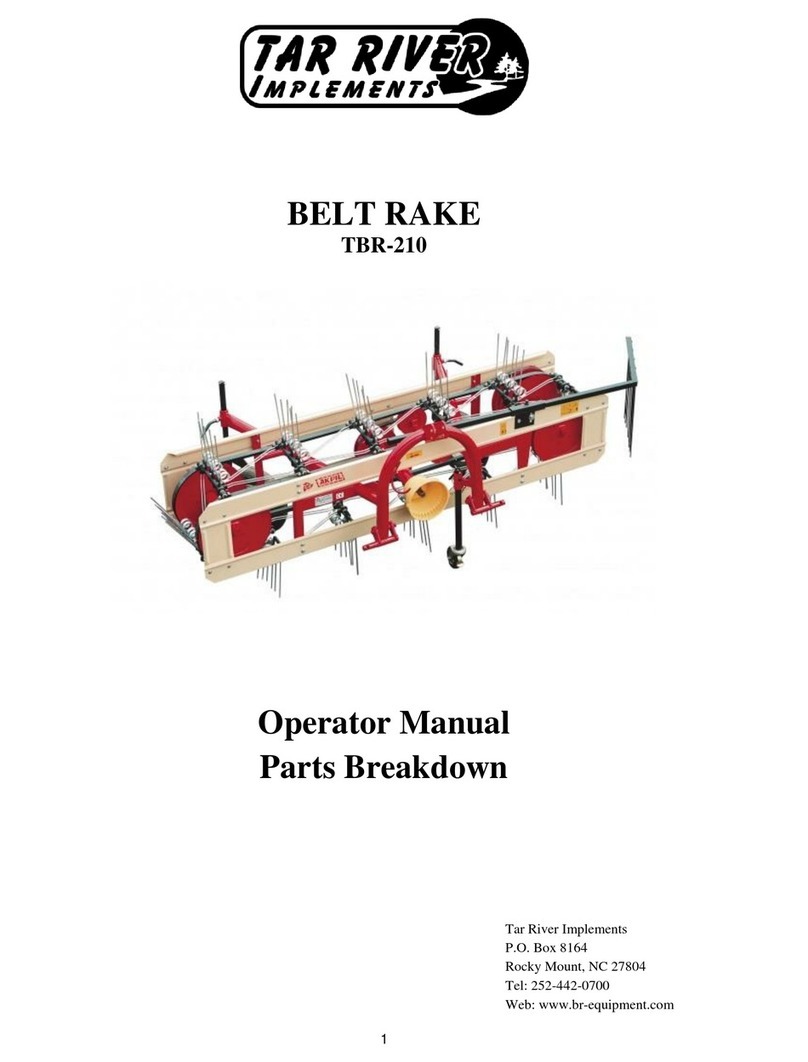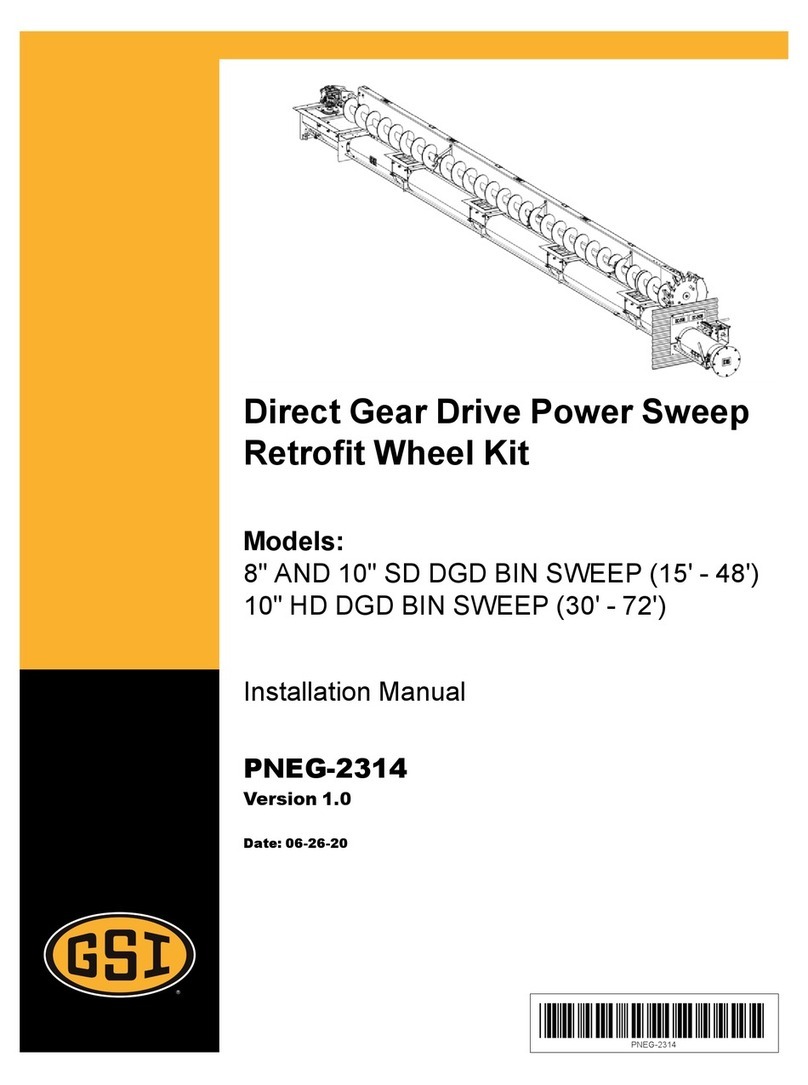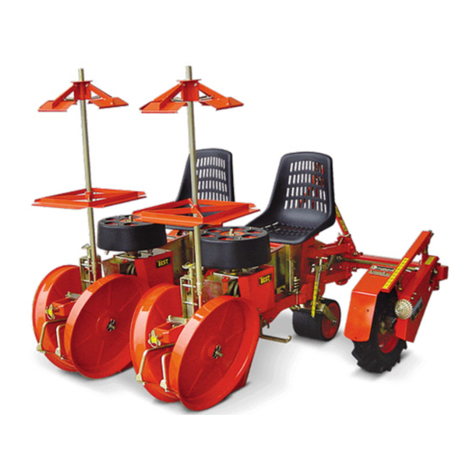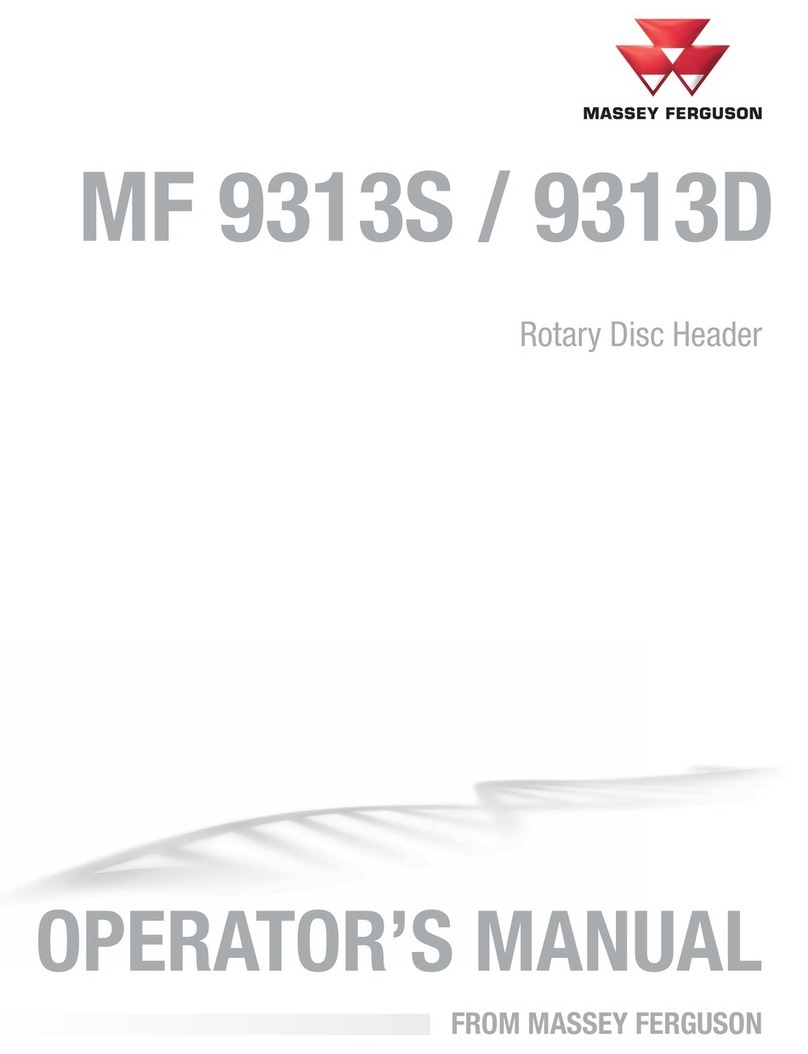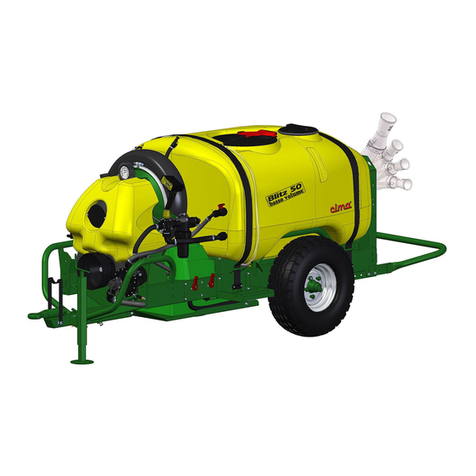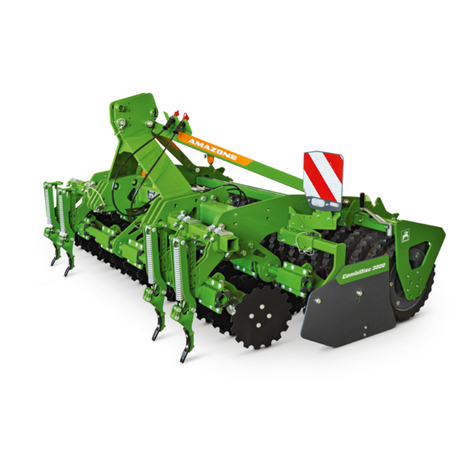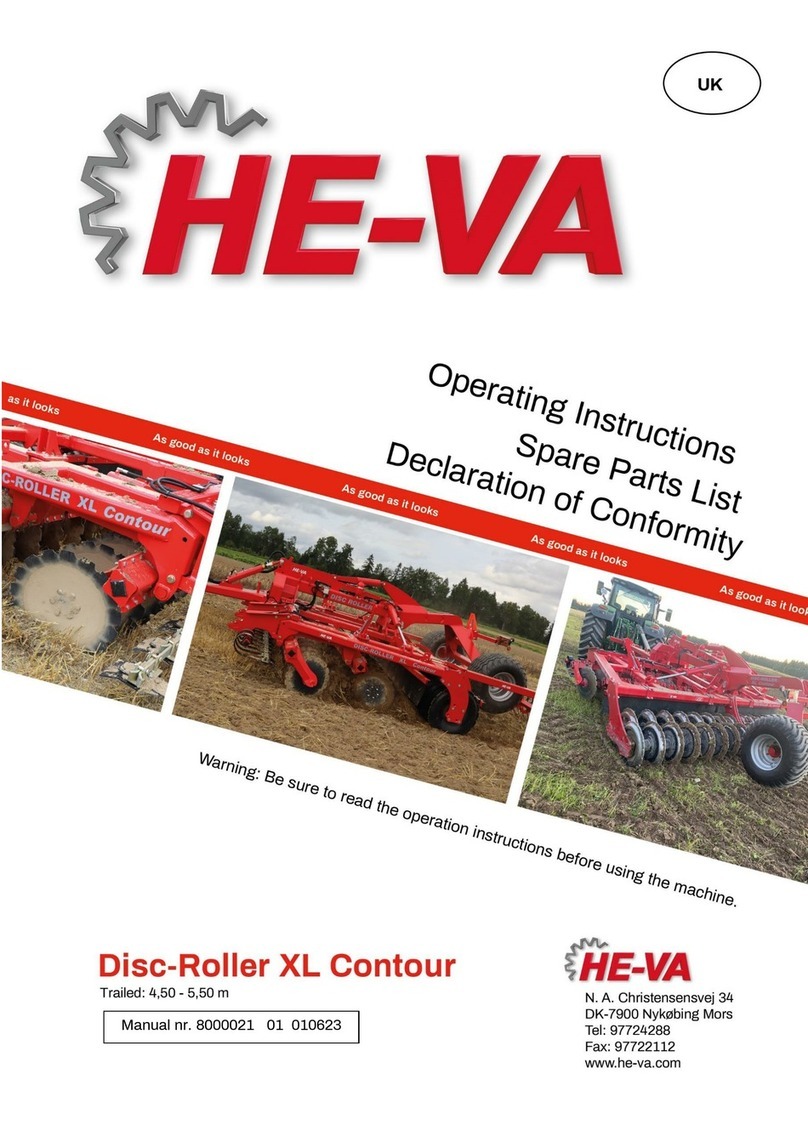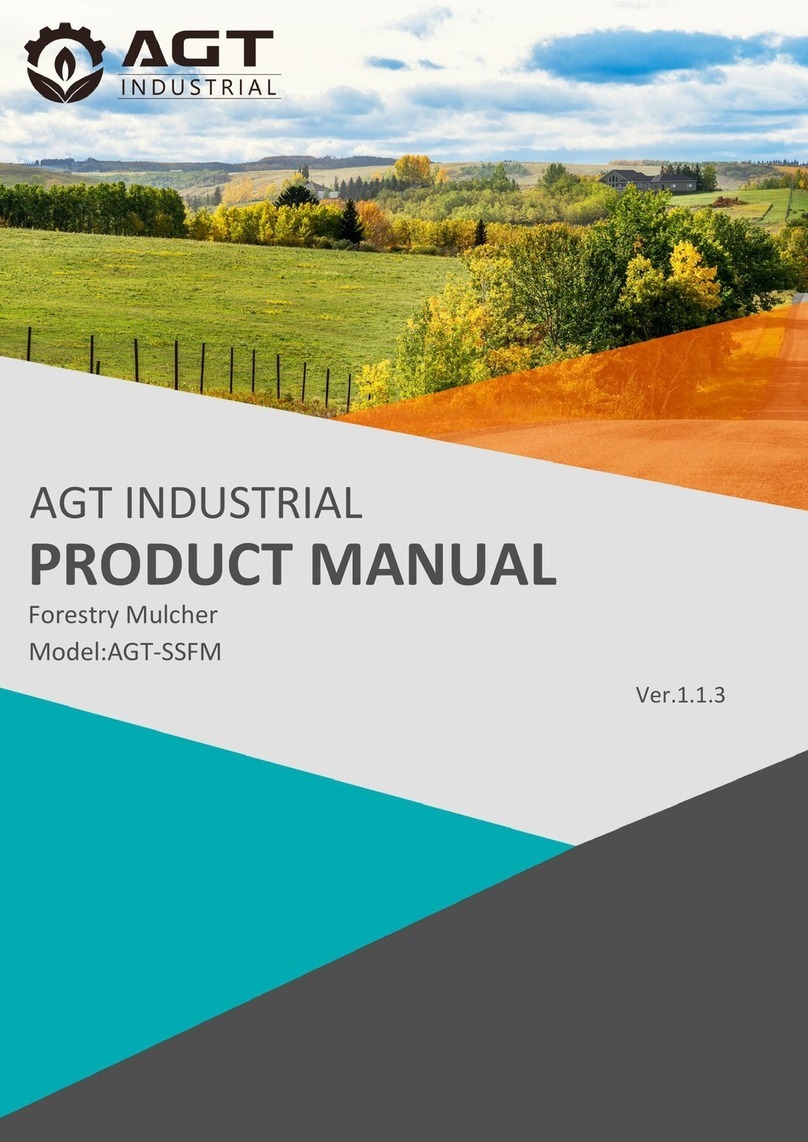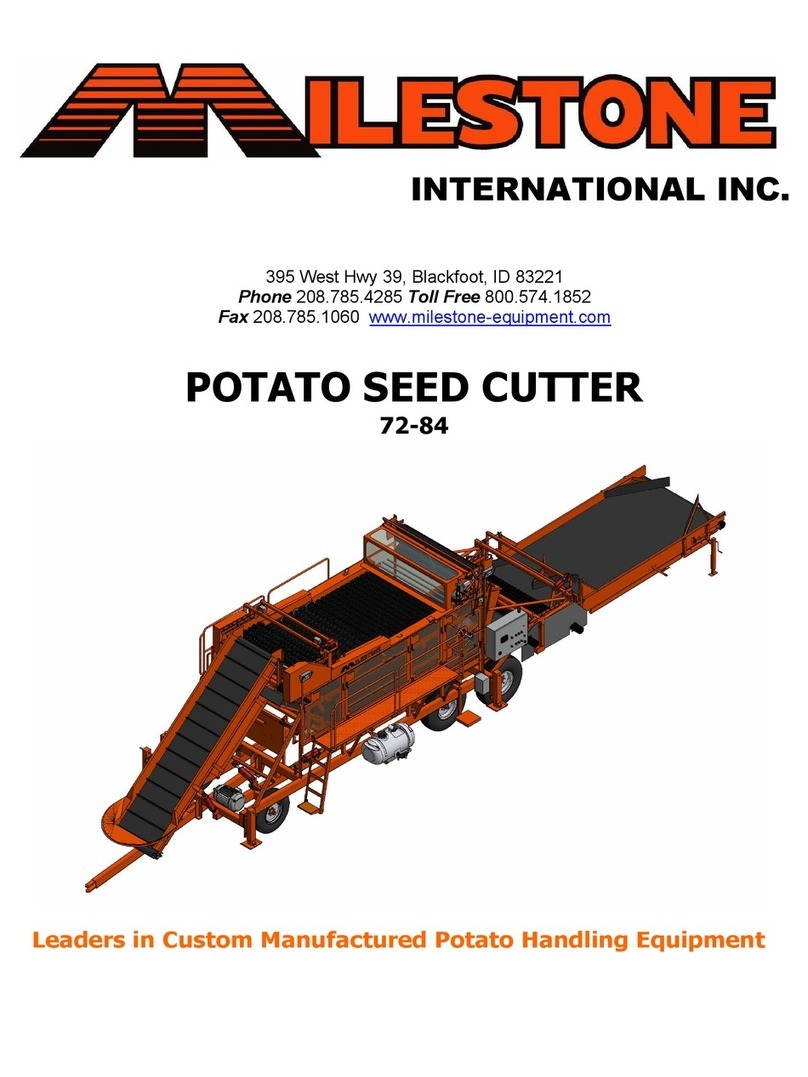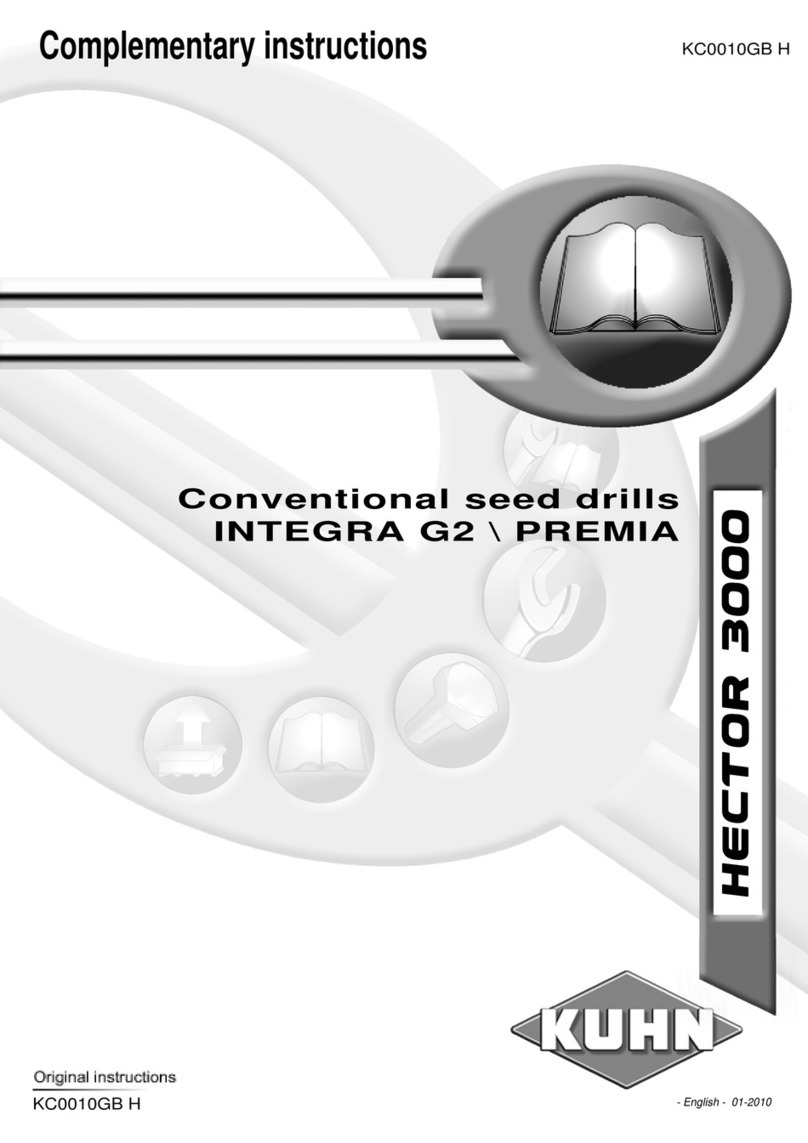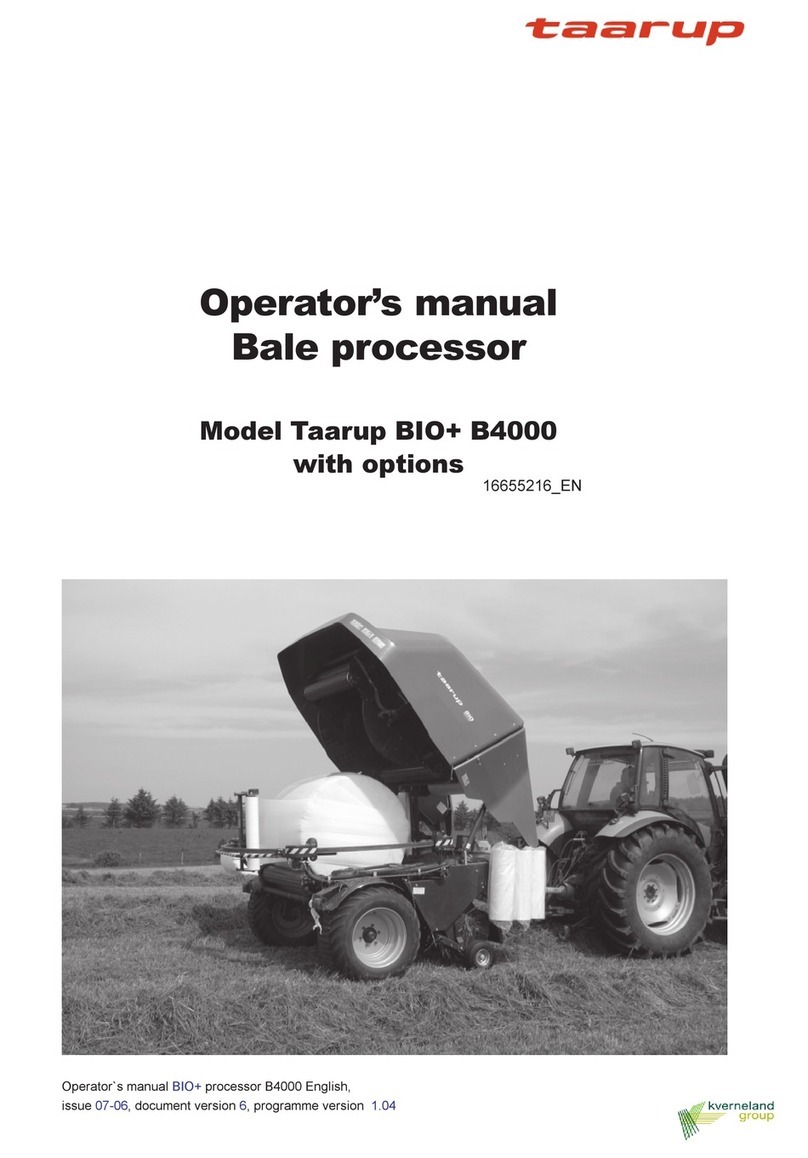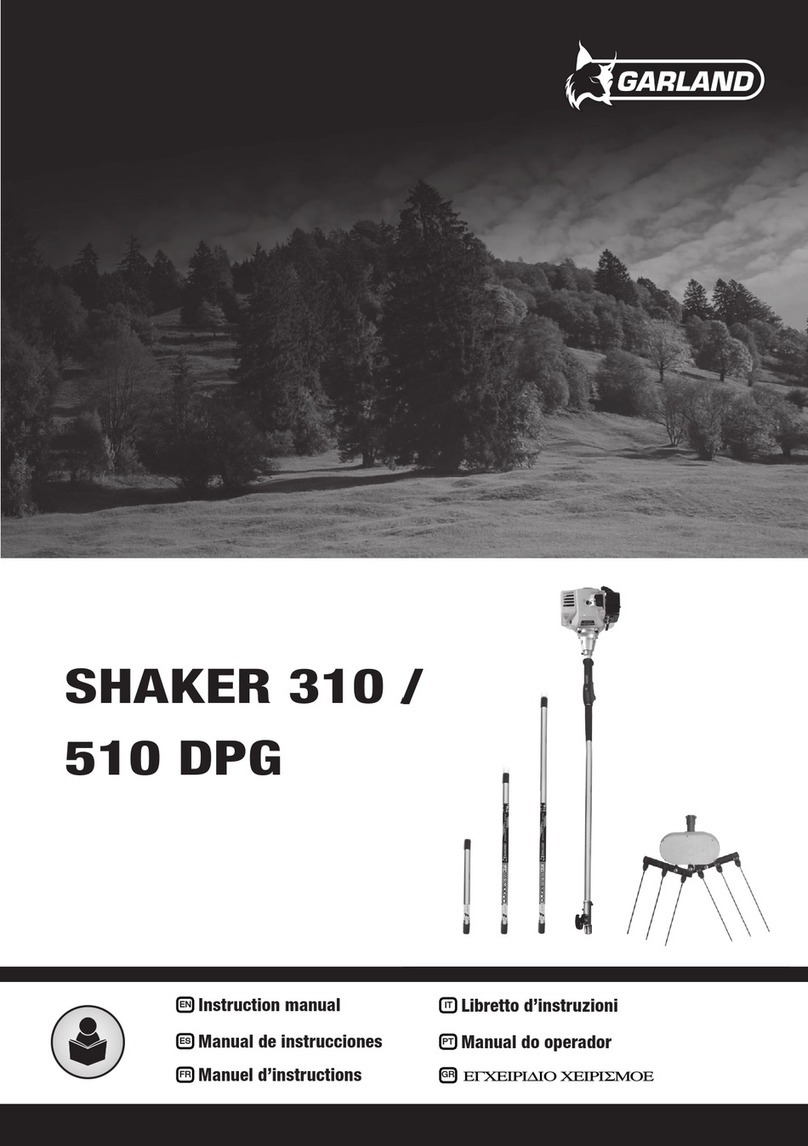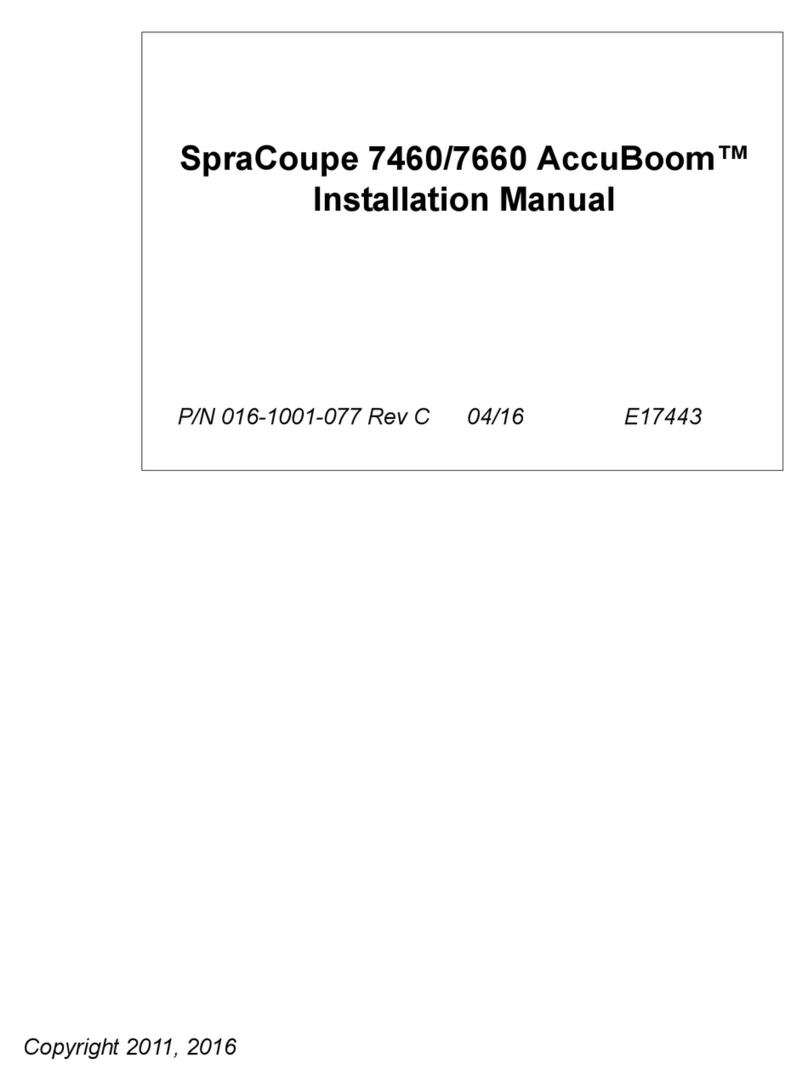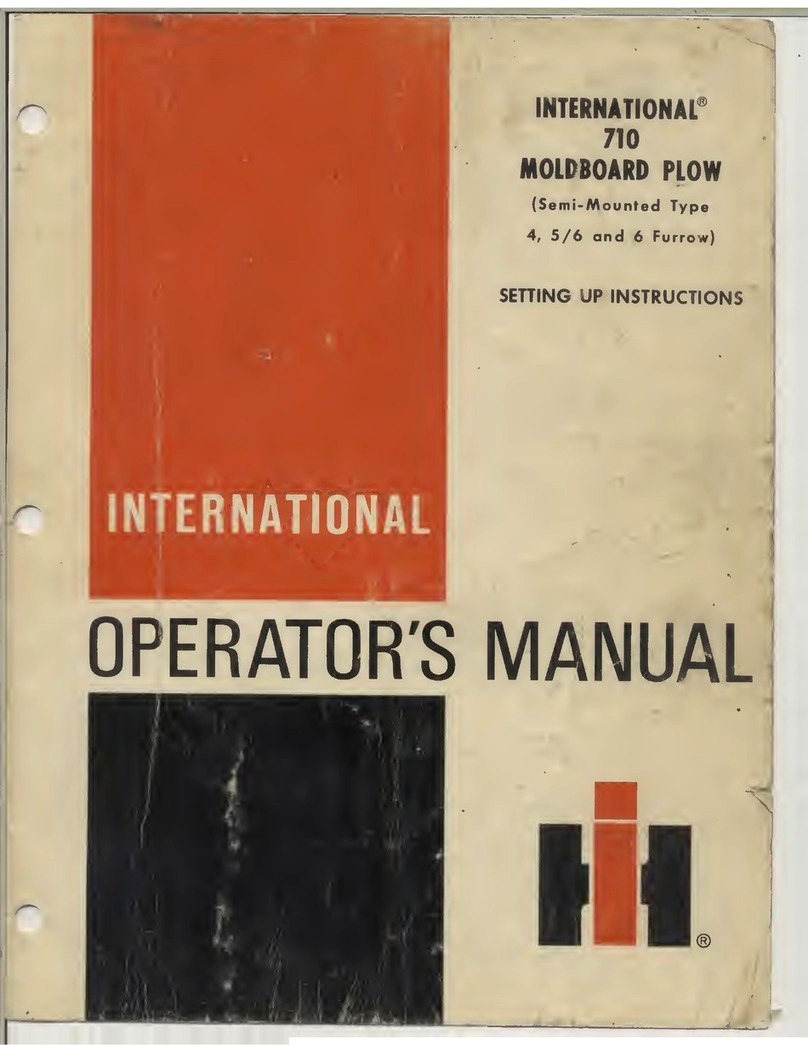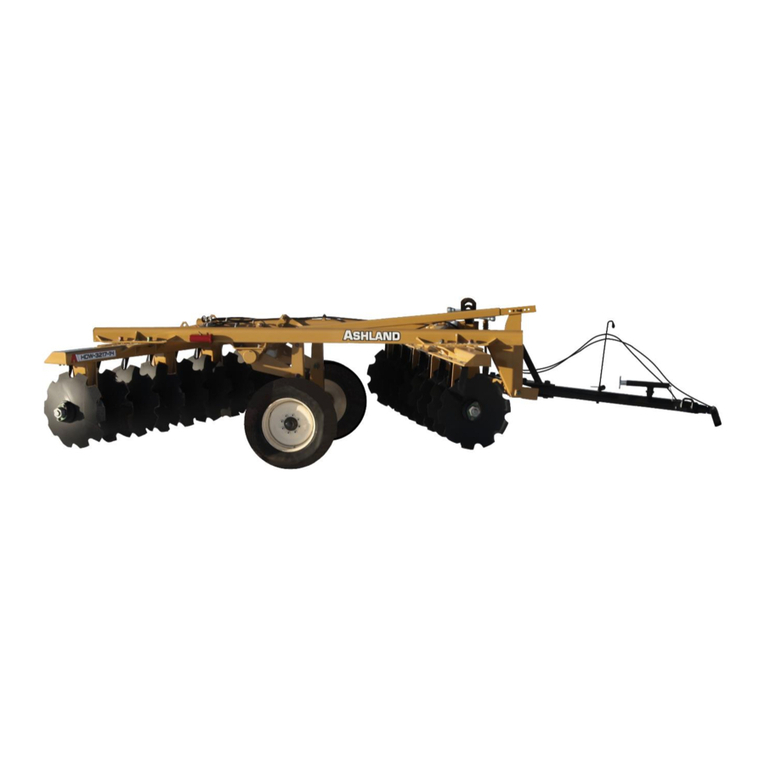EQUIPMENT SAFETY GUIDELINES
•Safety of the operator and bystanders is one of the main concerns in designing and
developing a mower. However, every year accidents occur which could have been
avoided by a few moments of thought and a more careful approach to handling
equipment. You, the operator, can avoid many accidents by observing the following
precautions and insist those working with or for you adhere tothem.
•In order to provide a better view, certain illustrations in this manual may show an
assembly with a safety guard removed. However,equipment should never be operated
in this condition. Keep all guards in place. If guard removal becomes necessary for
repairs, reinstall the guard prior to use.
•
Replace any safety decal that is not legible or is missing. The locations of such
safety decals are indicated in this manual.
•Never operate this equipment while using alcoholic beverages or drugs that can hinder
alertness or coordination. Consult your doctor about operating this machine while
taking prescription medications.
•
Under no circumstances should children under the age of 18 be allowed to
work with or around this equipment. Do not allow anyone to operate or
assemble this equipment until they have read this manual and have
developed a thorough understanding of the safety precautions and operation.
Review safety instructions with all users annually.
•This equipment is dangerous to children and anyone unfamiliarwith its operation. The
operator shouldbea responsible,properly qualified,andphysicallyableperson familiar
with farm machinery and competent in this equipment's operation.
•Never exceed the limits of a piece of machinery. If its ability to do a job, or to do so
safely, is in question-
DON'T TRYIT.
•
Useatractor equippedwithaRollOver ProtectionSystemandseatbelts.(ROPS)
•Do not modify the equipment in any way. Unauthorized modifications could result in
serious injury or death and may impair the function and shorten the life of the
equipment.
•In addition to the design of this implement, safety decals and safety equipment,
accident prevention is dependent upon the awareness, common sense, forethought,
and proper training of everyone involved in the operation, transport, maintenance, and
storage of the machine. Also refer to safety messages and operating instructions in
each of the appropriate sections of the tractor manual. Pay close attention to the safety
decals affixed to the tractor and the Rotary Cutter Mower.
